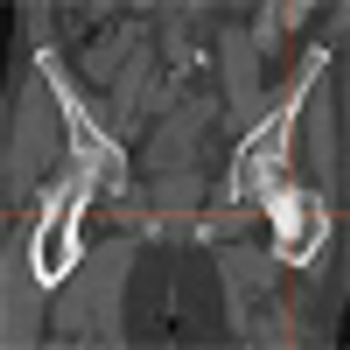
All News


CancerNetwork and the journal ONCOLOGY present exclusive breast cancer coverage from the annual meeting of the American Society of Clinical Oncology (ASCO). Follow the stories below and check back for more write-ups of the most important information to come out of this year's event.

It will likely not come as a surprise to anyone that the cost of cancer care is on the rise, from $104 bn in 2006 to over $173 bn in 2020. The rise in cost is driven by both the increasing cost in therapy (witness the newly approved metastatic melanoma treatment that is $120,000 for a 12-week course of therapy) and the extent of care.

One click can help millions around the world. Every new healthcare professional who creates a free account on www.cancernetwork.com will trigger our donation of $10 to the international organization Doctors Without Borders/ Mdecins Sans Frontires (MSF) - a non-profit delivering emergency medical assistance in nearly 60 countries to people affected by armed conflict, epidemics, malnutrition, natural disasters, or exclusion from health care. It's our way of promoting global social good for doctors caring for those in desperate need. Our goal is to donate $25,000 - enough for vaccinations for 25,000 people against meningitis, measles, polio or other deadly epidemics.

Your one click will help provide emergency medical care to millions of people caught in crises in nearly 60 countries around the world.

Editorial Inquiries:Anne Landry, Executive Editor Ph: 212-929-4624 Email: anne.landry@ubm.comContinuing Education: Marsha Peruo Ph: 201-984-6216 Email: marsha.peruo@cmellc.comEditorial Office: UBM Medica LLC 535 Connecticut Ave, Suite 300 Norwalk, CT 06854 Ph: 516-474-4766Publisher and Sales Contacts: Amy Birnbach Group Publisher Ph: 201-984-6265 Email: amy.birnbach@ubm.com Sarah Mifsud Account Manager Digital Media Ph: 203-523-7055 Email: sarah.mifsud@ubm.comWeb site Contact: Ian Ingram Web Editor Email: ian.ingram@ubm.com

Paid Subscriptions: UBM Medica Healthcare Publications PO Box 390427 Minneapolis, MN 55439 Ph: 952-844-0512 Fax: 952-844-0017 Email: oncsubs@masub.com Click here to change an address or to cancel a subscription.

OverviewONCOLOGY Nurse Edition addresses the clinical and informational needs of nurses and physician assistants working in cancer care. Scheduled publication months are February, April, July and October.Regular features in the ONCOLOGY Nurse Edition include: • Case studies • Review articles • Patient information • Drug essentials • Educational tear outsAudienceONCOLOGY Nurse Edition circulates to 8,500+ oncology nurses, advance practice nurses, and physicians assistants. Click here to view our media kit/rate card.

The journal ONCOLOGY is published monthly and is geared toward the practicing oncologist. It focuses on practical issues related to the care of patients with neoplastic disease. Topics covered may be either very broad or quite focused and, in general, are authored by a renowned expert in the particular area. Its exceptionally wide circulation within the clinical cancer community insures broad exposure of its editorial material. In addition, ONCOLOGY is included in Medline, Excerpta Medica, EMBASE, and the Cancer Line and CancerLit databases at the National Cancer Institute. Each article that appears in the journal is referred to one, two, or three reviewers, who are asked to write a short commentary to be published alongside the article. These commentaries broaden the reader's perspective on the topic being discussed as they serve to highlight areas of consensus or disagreement among professionals most familiar with the topic in question.


ONCOLOGY’s Nurse Edition publishes articles related to practical management issues in the care of patients with neoplastic disease. Through ONCOLOGY Nurse Edition, ONCOLOGY aims to provide readers with useful insights into all aspects of patient management, with an emphasis on information and tools that can be applied to daily practice and patient education.

Alisha Smallwood Licensing & Content Manager Wright's Media 2407 Timberloch Place, Suite B The Woodlands Texas 77380 Office: 281-419-5725 Toll: 877-652-5295 Fax: 281-419-5712 Email: asmallwood@wrightsmedia.comwww.wrightsmedia.com





Data from a phase II study of cabozantinib (XL184) in patients with advanced solid tumors show that the drug has activity in both bone and soft tissue. The study evaluated the efficacy and safety of cabozantinib compared to placebo in 9 different solid tumor types including breast, lung, ovarian, and prostate.


Paid Subscriptions: UBM Medica Healthcare Publications PO Box 390427 Minneapolis, MN 55439 Ph: 952-844-0512 Fax: 952-844-0017 Email: oncsubs@masub.com Click here to change an address or to cancel a subscription.

For the past 25 years ONCOLOGY has kept pace with the progression of the oncology field and has offered an interpretation of literature which appeals to both the academician and the practicing "in-the-trenches" community oncologist. Its unique editorial platform consists of clinical and practical review articles followed by 2-3 expert commentaries. The journal's review articles are authored by top physicians in their respective specialties and address important issues and questions such as: interpretations and reviews of the latest and sometimes controversial-research; and new "takes" on persistent unresolved problems. Editorial features such as Practice & Policy, explore the changing times in the healthcare landscape in such areas as FDA regulations, Medicare & Medicaid policy, and the impact of health care reform. Another feature is Integrative Oncology which covers alternative herbal treatments, uses, research, adverse reactions and interactions. ONCOLOGY serves as a strong resource and forum for the cancer care clinician and generates a strong sense of community among its readers. Click here to view our media kit/rate card.Publisher and Sales Contacts:Amy BirnbachGroup PublisherPh: 201-984-6265Email: amy.birnbach@ubm.comSarah MifsudAccount ManagerDigital MediaPh: 203-523-7055Email: sarah.mifsud@ubm.com

A pilot mentor-to-mentor oncology nurse–led training program was developed in which volunteer former patients who have undergone brachytherapy for early stage breast cancer at UCSD were taught by the oncology nurse how to provide information and support to new patients about to undergo the procedure.

One in four Americans facing end-of-life is a veteran. Because of their traumatic experiences during combat, including experiences with death, veterans with cancer and other serious illnesses can have complex healthcare needs.

This article will present a detailed review of the body of evidence regarding the PSA assay, with reflections on the resulting future of prostate cancer screening.

Shiitake, an edible mushroom indigenous to East Asia, is cultivated worldwide for its purported health benefits

Last week, well-known Canadian blogger Derek Miller's final blog entry was posted on his site, penmachine.com. Miller, who died on May 3 at the age of 41, was diagnosed with stage IV metastatic colorectal cancer in 2007.

A study published in the journal Cancer on May 9 has now specifically examined the outcome of cancer survivorship of the gay, lesbian, and bisexual population. The study authors found that cancer outcomes differ based on sexual orientation.

On Wednesday May 4th, the Cancer Drug Development Roundtable took place at the Ohio State University Comprehensive Cancer Center. The roundtable consisted of high-level stakeholders and the topic was the co-development of two or more experimental drugs for cancer treatment.

Because there has been little empirical evidence to back up patients’ stories, chemobrain has been met with skepticism by the medical community and has been a painful puzzle for many patients who couldn’t quite put a name to what they were feeling. This cognitive impairment-characterized by loss of memory and stumbling on words, among other symptoms-has come to be known as “chemobrain” or “chemofog.”

Gail R. Wilensky, PhD, has written an editorial on the Medicare reform that was published on April 27. 2011 in the online version of the NEJM. Professor Wilensky is an ecomomist, senior fellow at Project HOPE, and serves on Congressional committees to advise Congress on payment and other Medicare-related issues.

A group of researchers at the Ohio State University Comprehensive Cancer Center (OSUCCC) has discovered that a certain type of RNA, microRNA-155, may provide the link between inflammation and cancer.

